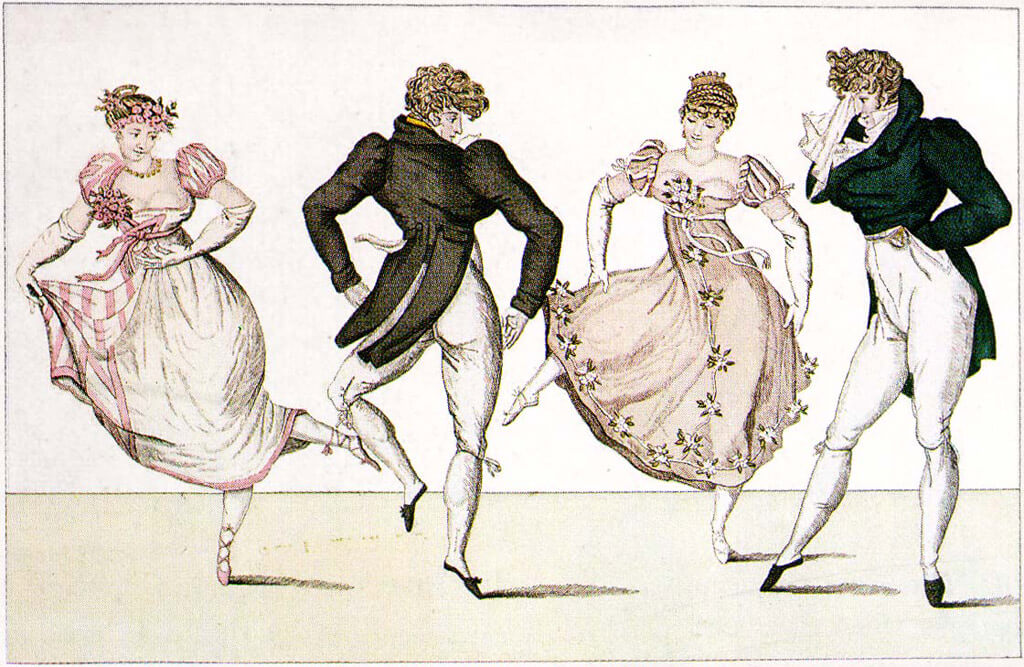The Cancan dance is one of the most popular dances in Paris’s history, very fashionable around the 1830s in the public balls of the capital. The French cancan dance is often improvised, combining posturing and leg lifts.
Considered today a tourist attraction of Paris at night, with a cheeky scent, the can can dance has a history intimately linked to the emancipation of the Parisians in general and women in particular.
Here’s the sulfurous story behind this subversive, feminist, and anti-establishment French cancan.

History of the Can Can Dance
The history of the can can dance begins in the 1820s. At that time, people went to the public balls in the capital to dance the ‘quadrille.’ The quadrille was a dance in pairs very popular in Paris, but it was very codified and with no room for improvisation.

Tired of this strict dance, some men decided to indulge in a few minutes of extravagance, dancing alone. This short performance was known as the ‘cavalier seul’. Men would improvise solo movements like throwing themselves on the floor, crossing the ballroom, sliding on their stomachs, putting their heads down, or their feet in the air.
These few minutes of ‘cahut’ or ‘cancan’ (heckling) based on disorderly figures and anarchic movements quickly became cathartic sessions for men. There were mixed feelings about this cancan dance, and some bourgeois even complained. But why not? If this allowed men to let off steam…
Things changed in 1829 when women dared to grant themselves this privilege and therefore dance alone, performing these extravagant movements without being guided by a man.

The authorities immediately banned this dance practice considered indecent and scandalous, and the Church started to preach against cancan. The police had orders to arrest the cancan dancers; the press insulted cancan dancers; it was just too much!
The ban did not prevent the most intrepid women from dancing the cancan, far from it! The cancan dance became the dance of the women who were looking for a certain freedom. Female cancan dancers created their character with a particular name (La Reine Pomaré, Brididi, Chicard, Céleste Mogador…). They defied the law to become the first darlings of public balls in the capital.
The ban also aroused curiosity, and people from everywhere headed to the public balls to see the adventurous cancan dancers, who dared to defy authority.
Under the impetus of these avant-garde dancers, the cancan dance became popular and codified while keeping its outgoing and eccentric aspect. The cancan is a dance often improvised, with transgressive figures. Each figure of the cancan expresses something particular, usually to make fun of the bourgeoisie, the Church, or the army:
- Coup de cul – a way for dancers to make fun of the bourgeoisie and the nobility;
- Cathedral – with their bodies, the women build the sacred edifice and they support each other;
- Guitar;
- Carrying a weapon – one of the legs (weapon) is totally raised and held by the two hands;
- Assault;
- No charge.
Evolution of the Cancan Dance
>In 1857, the dancer Rigolboche invented the series of beats that we know today, raising and lowering the leg.
>In 1858 Jacques Offenbach composed the ‘Galop Infernal’ as part of his opera ‘Orphée aux Enfers ’. Some years later, the cancan dancers made the ‘Galop’ their hymn, THE cancan song.
>In 1860, the cancan dance became more professional, and women were paid better than men to dance the cancan.
> In the 1880s, the first cabarets opened at the foot of the Butte Montmartre and gave this ‘dance of debauchery’ a place to flourish. The Moulin Rouge, the Moulin de la Galette and the Folies-Bergère put women at the heart of their shows and let to cancan stars shine.
There was La Goulue, Nini Pattes en l’Air, Rigolboche, or Grille d’Égout, famous cancan dancers who spread their legs, lifted their petticoats, and had a strong character.

The Cancan Dance Abroad: the French Cancan Dance

At the beginning of the 20th century, the cancan dance was a real phenomenon in Paris. The English entrepreneur Charles Morton decided to export the concept to London, and the cancan dance became the ‘French cancan,’ a name he believed could ‘sell’ better abroad.
English and American spectators of the time quickly became fond of this dance ‘Made in Paris’, which in their eyes symbolized not only all the excesses of the French capital but above all the feeling of recklessness and joie de vivre that reigned during the Belle Époque. Still today, watching a cabaret show with cancan dance is one of the top things to do in Paris, at least for first-timers in Paris!
Where to See French Cancan in Paris?

There are many fun cabarets in Paris, but not all the cabarets propose the French cancan. The list of top cabarets in Paris to see cancan dance includes:

